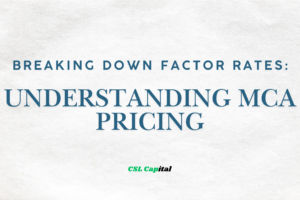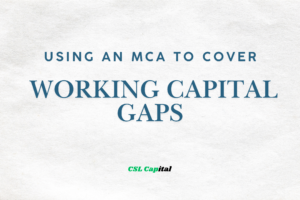In today’s fast-paced business environment, maintaining healthy working capital is crucial for businesses of all sizes. However, unexpected expenses or fluctuations in cash flow can often create gaps in working capital, hindering operations and growth. This is where Merchant Cash Advances (MCAs) come into play as a flexible financing option that can help bridge these gaps effectively.
Leveraging an MCA to Bridge Gaps in Working Capital
When a business finds itself struggling with working capital shortages, leveraging an MCA can be a smart solution. MCA providers offer quick access to funds based on the business’s future credit card sales. This means that as sales increase, the repayment amount adjusts accordingly, making it a flexible option for businesses with fluctuating revenue. Personally, I learn best with point-blank Q&A, so let’s get into it the way I’d want it broken down.
FAQs about Leveraging an MCA to Bridge Gaps in Working Capital:
1. What exactly is a Merchant Cash Advance (MCA)?
A Merchant Cash Advance is a type of financing where a business receives a lump sum payment in exchange for a percentage of its daily credit card sales. This allows businesses to access capital quickly without the need for extensive paperwork or collateral.
2. How can businesses use an MCA to bridge working capital gaps?
Businesses can use the funds from an MCA to cover various expenses such as purchasing inventory, paying suppliers, covering payroll, or investing in marketing efforts. By infusing cash into the business when needed, MCAs help bridge temporary gaps in working capital.
3. Are there specific industries that benefit most from leveraging MCAs?
While businesses across various industries can benefit from MCAs, industries with high credit card sales volumes such as retail, restaurants, and e-commerce tend to find MCA financing particularly useful in managing working capital gaps.
4. What are the typical repayment terms for an MCA?
Repayment terms for MCAs vary based on the agreement between the business and the MCA provider. Typically, repayments are made daily or weekly as a percentage of the business’s credit card sales until the advance amount and fees are fully repaid.
5. Can businesses with poor credit history qualify for an MCA?
One of the advantages of MCAs is that they are more lenient when it comes to credit history compared to traditional loans. Businesses with less-than-perfect credit scores can still qualify for an MCA based on their credit card sales history and overall financial health.
6. What are the key benefits of leveraging an MCA for working capital needs?
The main benefits of using an MCA to bridge working capital gaps include quick access to funds, flexible repayment terms, no collateral requirement, and the ability to maintain cash flow during challenging periods.
My Two Cents on MCA’s
Bottom line… using an MCA to cover short-term working capital gaps can really help when cash flow gets tight. If you get how they work and when they make sense, you’ll be in a better spot to keep things moving, even when money’s a little unpredictable. It’s worth looking into if you want to keep your business steady and flexible in today’s fast-changing world.




